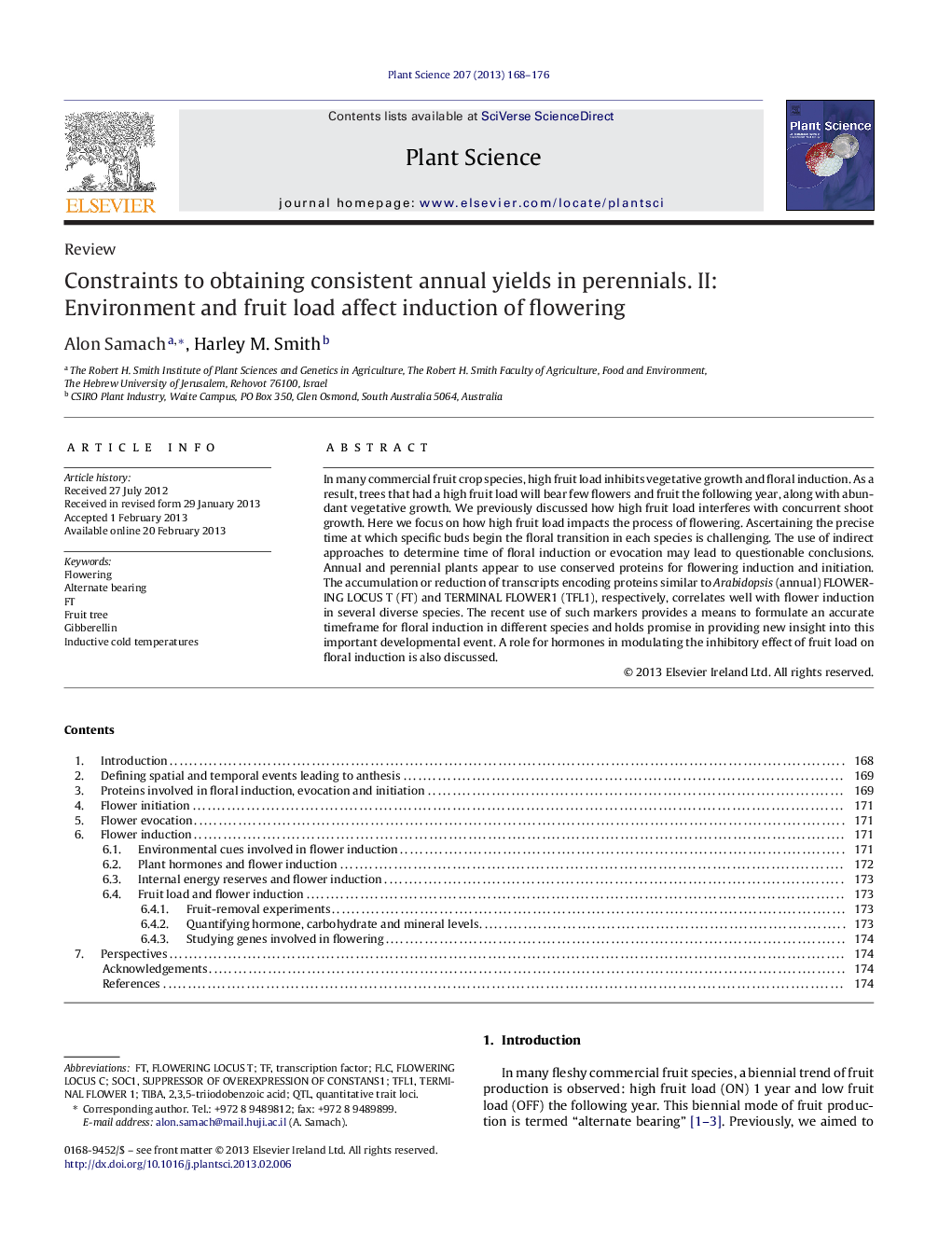| Article ID | Journal | Published Year | Pages | File Type |
|---|---|---|---|---|
| 2017137 | Plant Science | 2013 | 9 Pages |
In many commercial fruit crop species, high fruit load inhibits vegetative growth and floral induction. As a result, trees that had a high fruit load will bear few flowers and fruit the following year, along with abundant vegetative growth. We previously discussed how high fruit load interferes with concurrent shoot growth. Here we focus on how high fruit load impacts the process of flowering. Ascertaining the precise time at which specific buds begin the floral transition in each species is challenging. The use of indirect approaches to determine time of floral induction or evocation may lead to questionable conclusions. Annual and perennial plants appear to use conserved proteins for flowering induction and initiation. The accumulation or reduction of transcripts encoding proteins similar to Arabidopsis (annual) FLOWERING LOCUS T (FT) and TERMINAL FLOWER1 (TFL1), respectively, correlates well with flower induction in several diverse species. The recent use of such markers provides a means to formulate an accurate timeframe for floral induction in different species and holds promise in providing new insight into this important developmental event. A role for hormones in modulating the inhibitory effect of fruit load on floral induction is also discussed.
Graphical abstractFigure optionsDownload full-size imageDownload as PowerPoint slideHighlights► Function of key floral transition regulators appears to be conserved in plants. ► FT transcript accumulation or TFL1 transcript depletion correlates with floral induction in several fruit trees. ► Fruit load may inhibit floral induction by reducing FT transcript accumulation. ► A memory of high fruit load could be stored until flower induction.
